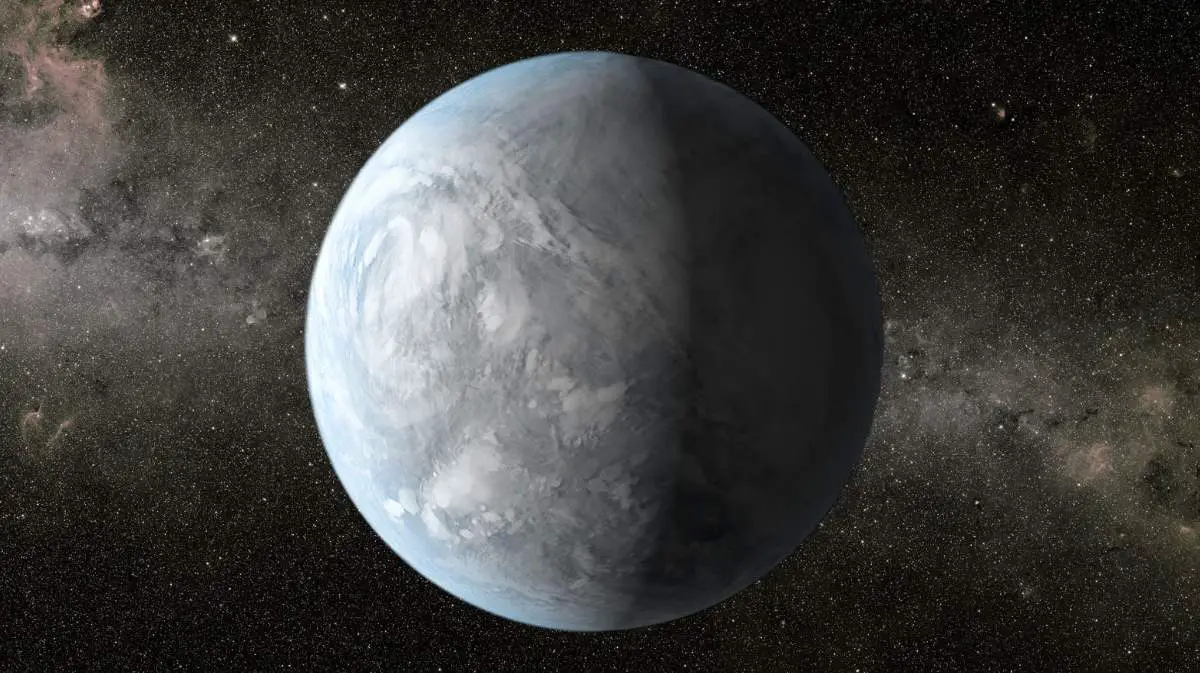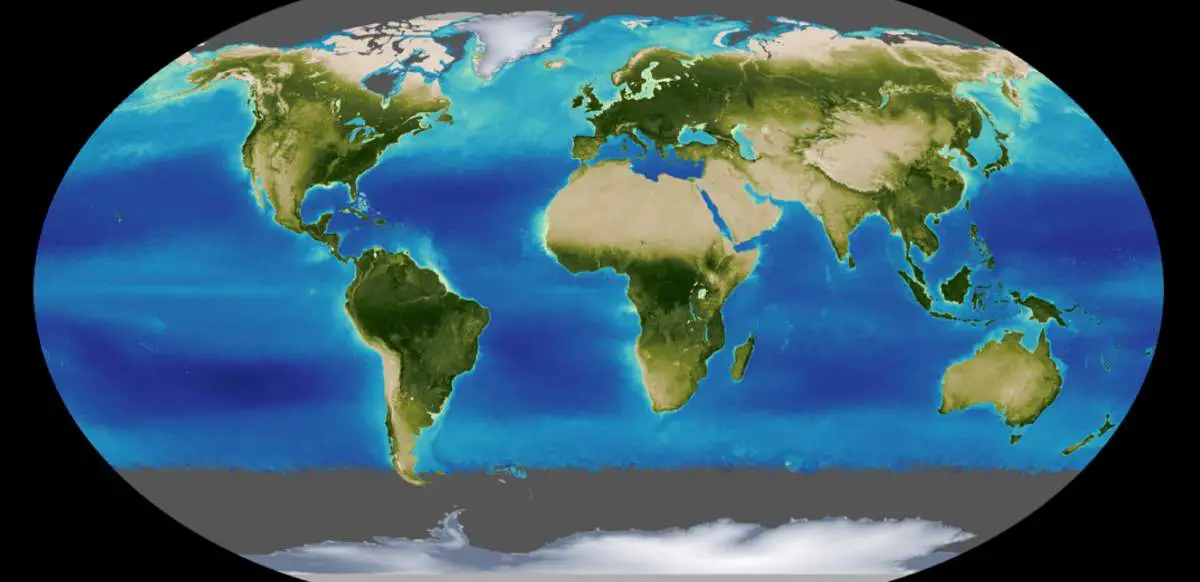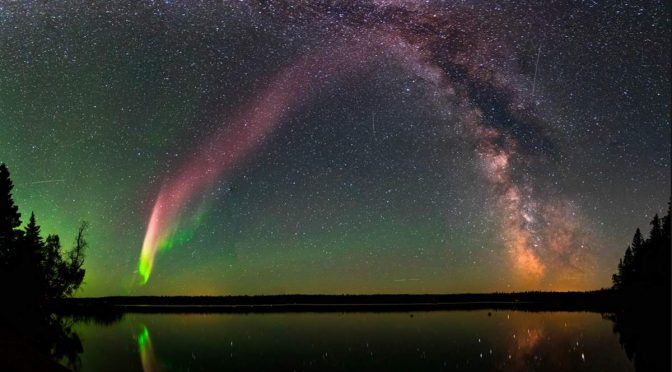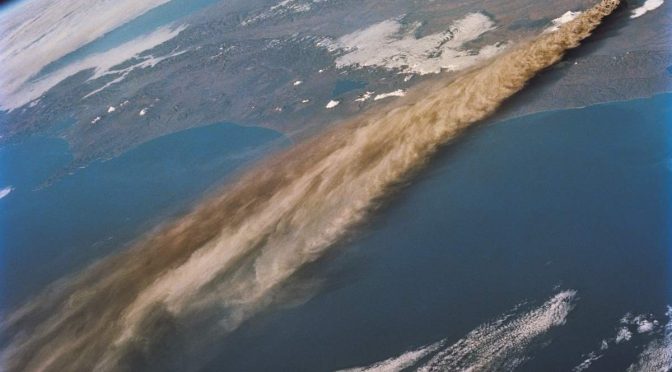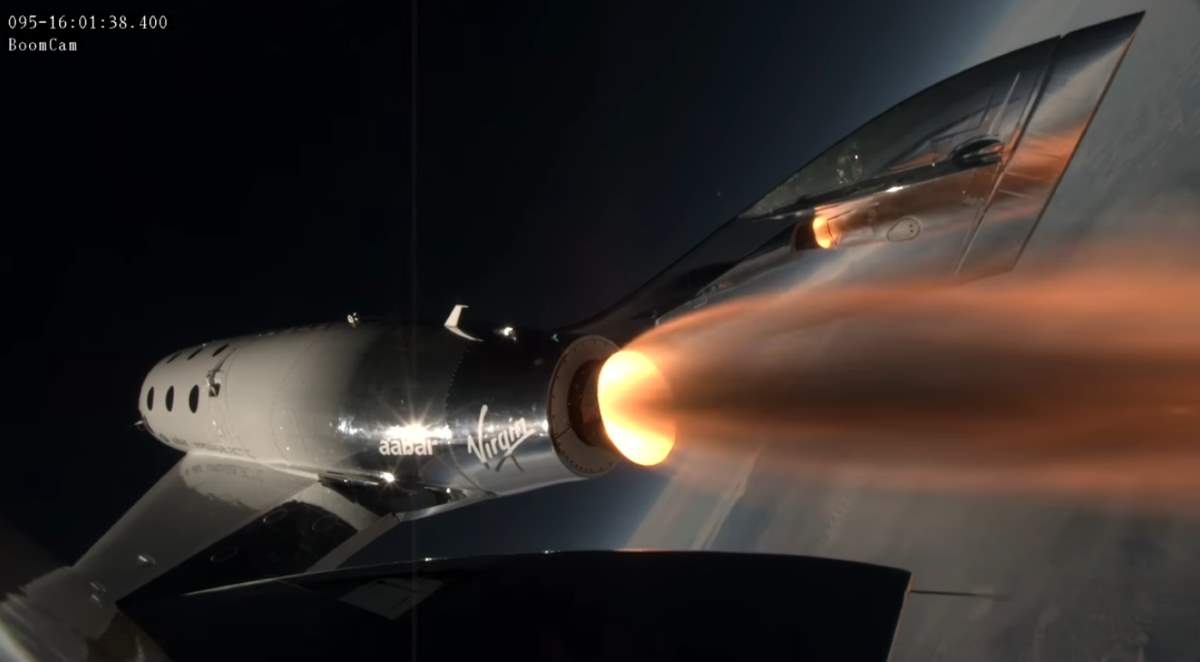What would it be like to stand on the surface of another planet? “We The Curious” channel has teamed up with a group of astrophysicists to create a scientifically accurate virtual reality tour of six real exoplanets discovered outside our solar system. The fruit of this collaboration is the video below, in 4K Ultra-HD and 360-degree. Narrated and produced by Ross Exton.
Continue reading “Virtual Reality Tour of 6 Real Exoplanets [4K Ultra-HD, 360°]”TRAPPIST-1e has an Iron Core
A new study published on April 26, 2018, suggests that TRAPPIST-1e, an exoplanet orbiting the red dwarf star TRAPPIST-1, has a large iron core. This could mean that the planet TRAPPIST-1e may have a protective magnetosphere (see notes 1) as we have here on Earth.
Continue reading “TRAPPIST-1e has an Iron Core”What would happen if the Earth started spinning backward?
The dynamics of the ocean and the atmosphere are strongly influenced by the Earth’s rotation. Currently, our planet rotates from west to east (prograde, which appears counterclockwise) with a linear velocity of 465.1013 m/s (1674.365 km/h or 1040.40 mph) at the equator. What would happen if the Earth started spinning backward (from east to west)?
Continue reading “What would happen if the Earth started spinning backward?”Earth’s Biosphere from space [The Green Marble]
NASA has published a video titled “Earth’s Biosphere: The Green Marble”, showing the monthly averages of land greenness (vegetation) and ocean chlorophyll. You can watch how the primary producers (plants and phytoplankton) transform the Earth’s landmasses and oceans over 12 months.
Continue reading “Earth’s Biosphere from space [The Green Marble]”Global Warming: Future greenhouse gas emission scenarios
The future of our carbon dioxide and greenhouse gas emissions will decide how many degrees will planet Earth be warmer by 2100 (relative to pre-industrial temperatures). Using the data from Climate Action Tracker, the online publication that shows how living conditions are changing, Our World In Data has published a chart showing future greenhouse gas emission scenarios and how each scenario would result in estimated global warming by 2100.
Continue reading “Global Warming: Future greenhouse gas emission scenarios”Virtual Moon Tour [4K Ultra HD]
Using data provided by the Lunar Reconnaissance Orbiter spacecraft (see notes 1) since 2009, NASA has published an amazing virtual Moon tour in 4K Ultra HD (see notes 2). As the visualization moves around the near side, far side (see notes 3), north and south poles, interesting features, sites, and information gathered on the lunar terrain get highlighted.
Continue reading “Virtual Moon Tour [4K Ultra HD]”Want to Become a Citizen Scientist for NASA? Now you can
You can help NASA on some projects: for instance, citizen scientists helped NASA identify an aurora-related celestial phenomenon, now called STEVE. Want to become a citizen scientist? You can find projects on the
Astronaut Honors Holocaust Remembrance Day from space with “Moon Landscape” drawing by Holocaust victim Petr Ginz
NASA Astronaut Andrew Jay “Drew” Feustel, who is currently living and working aboard the International Space Station, published a photo on his Twitter account with a replica of the “Moon Landscape” drawing by Holocaust victim Petr Ginz to honor Holocaust Remembrance Day (Yom HaShoah). The replica of the painting was first flown in space by Ilan Ramon (June 20, 1954 – February 1, 2003), the first Israeli astronaut for NASA. Ramon has died in the re-entry accident of STS-107, the fatal mission of the Space Shuttle Columbia. Ilan Ramon’s mother and grandmother were Auschwitz survivors, and his grandfather and other family members perished in Nazi death camps.
Feustel took with him to space a copy of a special drawing entitled “Moon Landscape”, which was created by a Jewish Czech boy named Petr Ginz (1 February 1928 – 28 September 1944) while incarcerated in Terezin, Czechoslovakia, during World War II. The drawing depicts how Earth would look from the surface of the moon. Petr was fascinated by science fiction and inspired by his favorite author, the French novelist, poet, and playwright Jules Verne (8 February 1828 – 24 March 1905), to draw and write stories about a far-off world he would never visit. At the age of 16, Petr lost his life at Auschwitz.
Continue reading “Astronaut Honors Holocaust Remembrance Day from space with “Moon Landscape” drawing by Holocaust victim Petr Ginz”Kliuchevskoi Volcano from Space (NASA Image)
During the STS-68 mission (September 30-October 11, 1994), the crew members of Space Shuttle Endeavour used a 70 mm camera to photograph Klyuchevskaya Sopka (also known as Kliuchevskoi), a stratovolcano, the highest mountain on the Kamchatka Peninsula of Russia and the highest active volcano of Eurasia. The eruption was new when this photo was taken. It was photographed from 115 nautical miles (213 kilometers) above Earth.
Continue reading “Kliuchevskoi Volcano from Space (NASA Image)”Virgin Galactic’s VSS Unity First Powered Flight
On April 5, 2018, the first powered flight test of VSS Unity, the suborbital (see notes 1) rocket-powered crewed spaceplane (see notes 2) of Virgin Galactic, took place. The American spaceflight company published the highlights video of the event on its YouTube channel.
Continue reading “Virgin Galactic’s VSS Unity First Powered Flight”